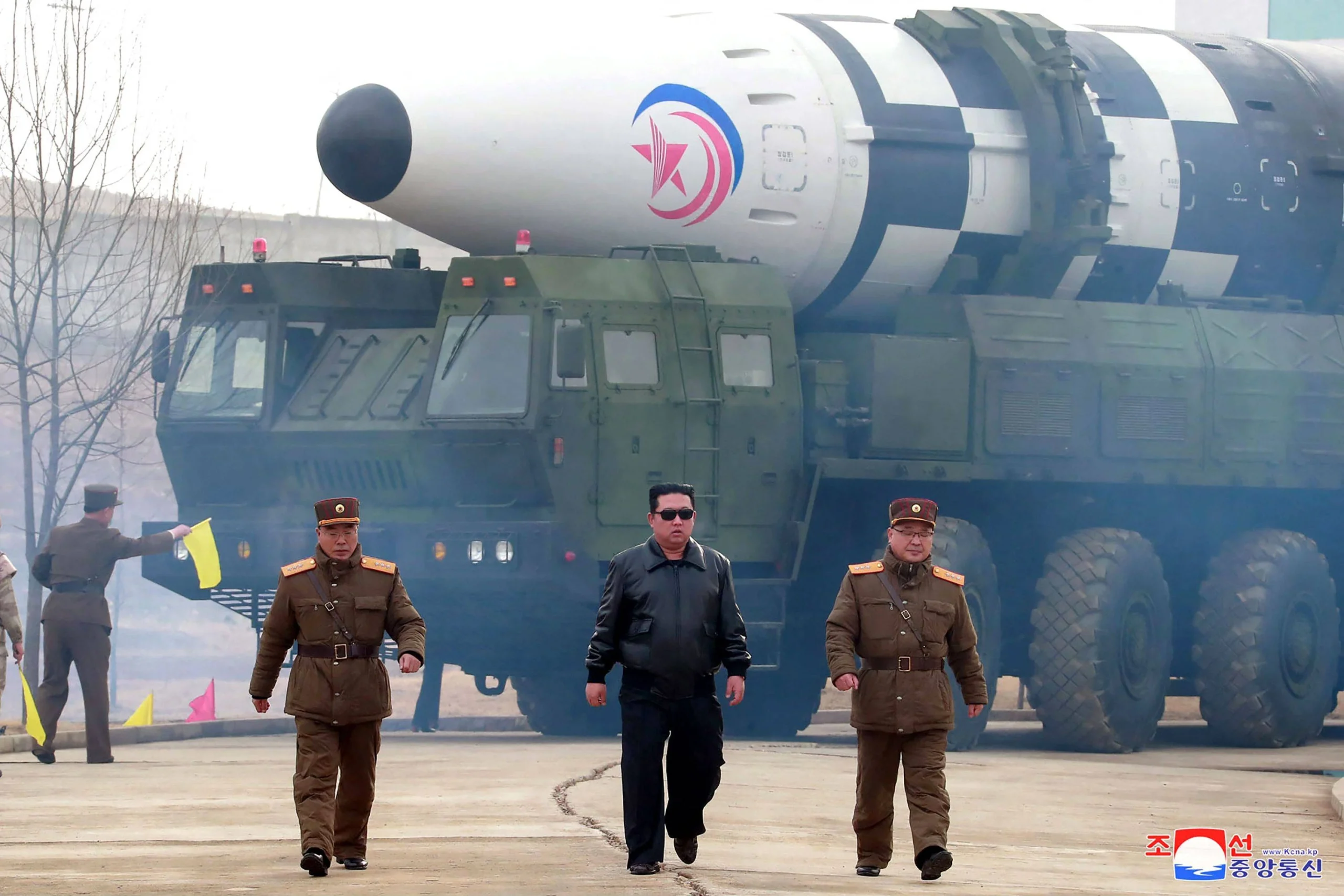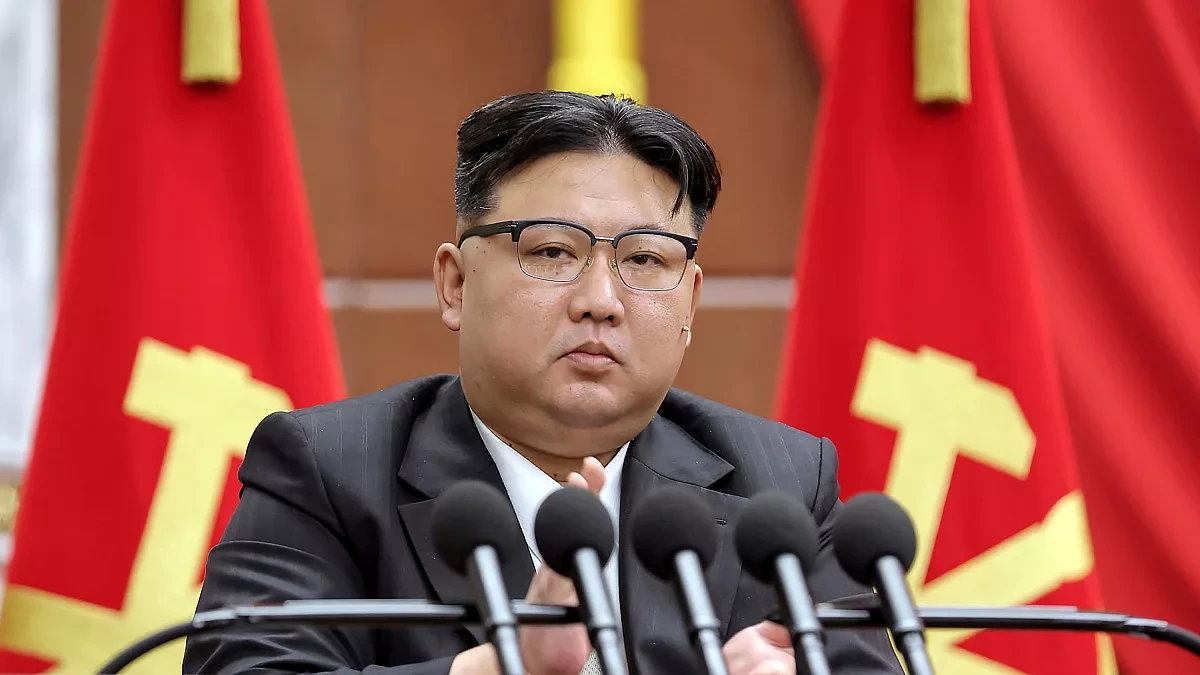In today’s tense geopolitical climate, there are speculations regarding North Korea’s intentions towards South Korea. Rumors of an imminent attack have been swirling, capturing the attention of the international community. As tensions rise, it’s important to separate fact from fiction and examine the situation objectively.
With North Korea making headlines for its missile tests and aggressive rhetoric, concerns have been growing about the stability of the Korean Peninsula. While it’s essential to stay informed, it is equally important to approach these rumors with caution and verify the sources.
In this article, we will delve into the current situation between North and South Korea, exploring the historical background and recent developments shaping these concerns. By gathering all relevant information and analyzing it through an unbiased lens, we aim to provide a comprehensive understanding of the situation, dispelling misinformation and offering a clear perspective.
Join us as we navigate the complex dynamics of the Korean Peninsula, shedding light on the truth behind speculations and gaining a deeper insight into the potential threats faced by South Korea. Stay informed, stay aware, and let’s separate fact from fiction.

Historical Context of North Korea-South Korea Relations
The history of North Korea and South Korea is complex and deeply rooted in political and ideological differences. The Korean War, which took place from 1950 to 1953, resulted in the division of the Korean Peninsula into two separate countries. Since then, tensions have remained high between the two nations.
The ideological divide between North Korea, a socialist regime, and South Korea, a capitalist democracy, has fueled animosity and mistrust. Over the years, North Korea has pursued a policy of military buildup, developing nuclear weapons and ballistic missiles, which has further strained relations with South Korea and the international community.
Despite occasional attempts at dialogue and cooperation, such as the historic summit between North Korean leader Kim Jong-un and South Korean President Moon Jae-in in 2018, the fundamental differences between the two countries have not been fully reconciled. This historical context provides the backdrop for the current tensions between North and South Korea.
Current Tensions Between North Korea and South Korea
In recent years, North Korea’s provocative actions have heightened concerns about the potential for conflict on the Korean Peninsula. The country has conducted several missile tests, including intercontinental ballistic missile (ICBM) launches, and has made inflammatory statements threatening its neighbors, particularly South Korea and the United States.
One key factor contributing to the tensions is North Korea’s nuclear weapons program. The country’s pursuit of nuclear capabilities has been met with international condemnation and economic sanctions. Despite diplomatic efforts to curb North Korea’s nuclear ambitions, the regime remains defiant, insisting on its right to develop nuclear weapons for self-defense.
South Korea, on the other hand, has taken a more cooperative approach, emphasizing dialogue and engagement with North Korea. The South Korean government has been actively involved in diplomatic efforts to ease tensions, including the establishment of communication channels and the promotion of inter-Korean economic cooperation. However, these efforts have been met with mixed results, as North Korea continues to display aggression and defiance.
Evaluating the Likelihood of a North Korean Attack
The question on many people’s minds is whether North Korea is genuinely planning to attack South Korea. While it is impossible to predict the future actions of any nation with certainty, it is crucial to analyze the available information and assess the likelihood of an attack.
Firstly, it is important to note that North Korea’s aggressive rhetoric and military activities are not new. The country has a long history of making threats and conducting military exercises, often as a means of exerting pressure and seeking concessions from the international community. Therefore, it is essential to consider these actions within the broader context of North Korea’s strategic objectives.
Secondly, despite the provocative actions, North Korea understands the consequences of launching a full-scale attack on South Korea. The potential for a devastating military response from South Korea, backed by its ally, the United States, acts as a strong deterrent. North Korea’s leadership is aware that any attack would likely result in significant casualties and the potential destruction of the regime.
However, this does not mean that the threat should be dismissed entirely. North Korea possesses a significant military arsenal, including ballistic missiles capable of reaching South Korea and other neighboring countries. While the likelihood of a preemptive attack remains relatively low, the risk of a miscalculation or accidental escalation cannot be completely ruled out.
International Response to the Potential Threat
The international community has closely monitored the situation on the Korean Peninsula, recognizing the potential consequences of a conflict between North and South Korea. Various countries and organizations have responded to the threat posed by North Korea’s aggressive actions.
The United States, as a key ally of South Korea, has maintained a strong military presence in the region to deter any potential aggression from North Korea. Additionally, the U.S. has imposed economic sanctions on North Korea, aiming to pressure the regime into abandoning its nuclear weapons program.
Other countries, such as China and Russia, have also played a significant role in attempting to de-escalate tensions. These nations, as North Korea’s neighbors and economic partners, have a vested interest in maintaining stability on the Korean Peninsula. They have participated in diplomatic efforts and supported United Nations resolutions aimed at curbing North Korea’s nuclear ambitions.
The international response to the potential threat has been a delicate balance between imposing economic pressure on North Korea and engaging in diplomatic dialogue. The objective is to find a peaceful resolution that ensures the security of South Korea and the wider region while preventing a catastrophic conflict.
Impact on South Korea’s Economy and Security
The escalating tensions between North and South Korea have had a significant impact on South Korea’s economy and security. The constant specter of aggression has created an atmosphere of uncertainty, affecting business investment and consumer confidence.
One area particularly affected is the tourism industry. South Korea has seen a decline in the number of foreign visitors due to safety concerns. The potential for a military conflict and the unpredictable behavior of North Korea have deterred many tourists from visiting the country.
Furthermore, the security situation has necessitated increased defense spending by South Korea. The country has focused on modernizing its military capabilities to effectively respond to any potential threats. This increased defense expenditure places a strain on the economy, diverting resources that could have been used for other developmental purposes.
Additionally, the psychological impact on the South Korean population cannot be overlooked. The constant state of tension and the fear of a potential attack have taken a toll on the mental well-being of the people. This, in turn, affects their productivity and overall quality of life.
Preparing for a Potential Attack
Given the uncertainties surrounding North Korea’s intentions, South Korea has taken proactive measures to prepare for a potential attack. The country has a well-developed civil defense system in place, which includes regular emergency drills and public awareness campaigns.
The government has implemented measures to ensure the safety of its citizens, including the construction of bomb shelters, evacuation plans, and the distribution of emergency supply kits. Additionally, South Korea maintains a robust intelligence network to monitor and assess any potential threats from North Korea.
In recent years, there has been an increased focus on cybersecurity as well. South Korea faces constant cyber threats from North Korea, including hacking attempts and malware attacks. Strengthening cybersecurity infrastructure has become a critical component of the country’s defense strategy.
While preparations are in place, it is essential to remember that the primary objective remains the prevention of a conflict. South Korea continues to pursue diplomatic channels, engaging in dialogue and cooperation with North Korea and the international community to find peaceful solutions to the ongoing tensions.

Diplomatic Efforts to De-escalate Tensions
Despite the challenges, diplomatic efforts to de-escalate tensions on the Korean Peninsula remain ongoing. South Korea has been at the forefront of these efforts, emphasizing the importance of dialogue and engagement.
The aforementioned 2018 summit between North Korean leader Kim Jong-un and South Korean President Moon Jae-in marked a significant step towards reducing tensions. The two leaders agreed to work towards denuclearization and lasting peace on the Korean Peninsula. Although progress has been slow, the summit laid the foundation for future negotiations.
Additionally, South Korea has actively engaged with other key players in the region, such as China, Japan, and the United States, to coordinate efforts and promote stability. These diplomatic engagements have included discussions on economic cooperation, humanitarian aid, and confidence-building measures.
The diplomatic approach recognizes that a peaceful resolution is the most desirable outcome for all parties involved. However, it requires patience, persistence, and a commitment to finding common ground despite the inherent challenges.
Role of the United States and Other Key Players
The United States plays a crucial role in the security dynamics of the Korean Peninsula. As a key ally of South Korea, the U.S. has maintained a military presence in the region for several decades. This presence serves as a deterrent against potential aggression from North Korea and provides reassurance to South Korea.
The United States has also been actively involved in diplomatic efforts to address the North Korean threat. In recent years, there have been several high-profile summits between North Korean leader Kim Jong-un and U.S. President Donald Trump. These summits aimed to find a path towards denuclearization and the normalization of relations between the two countries.
Other key players in the region, such as China and Russia, have a vested interest in maintaining stability on the Korean Peninsula. These countries have supported diplomatic efforts and participated in dialogue with North Korea. Their involvement is crucial in finding a peaceful resolution and preventing any potential conflict.
Conclusion and Future Outlook
The situation on the Korean Peninsula remains highly complex and uncertain. While rumors of an imminent attack between North Korea and South Korea continue to circulate, it is crucial to approach these speculations with caution and verify the sources.
By examining the historical context, current tensions, and evaluating the likelihood of an attack, we can gain a comprehensive understanding of the situation. The international response, impact on South Korea’s economy and security, and preparations for a potential attack provide further insights into the challenges faced by the region.
Diplomatic efforts to de-escalate tensions and the role of key players, including the United States, China, and Russia, demonstrate the ongoing commitment to finding peaceful resolutions. While progress has been slow, the importance of dialogue and engagement cannot be understated.
As we look to the future, it is crucial to remain informed, stay aware of the evolving situation, and separate fact from fiction. The potential threats faced by South Korea are significant, and it is essential to continue supporting diplomatic initiatives that aim to promote peace and stability on the Korean Peninsula.
In conclusion, while the possibility of a North Korean attack on South Korea cannot be dismissed entirely, a comprehensive understanding of the situation reveals a complex web of geopolitical dynamics. By staying informed and approaching the topic with cautious optimism, we can contribute to a more peaceful future for the Korean Peninsula and the world at large.
Thank you for reading our analysis on the potential threat North Korea poses to South Korea. If you found this topic intriguing and are interested in more groundbreaking developments, we invite you to read our latest article on China’s new innovation in nuclear battery technology. This cutting-edge battery promises a lifespan of 50 years, marking a significant leap in sustainable energy solutions. Don’t miss out on this fascinating exploration of China’s technological advancements.



